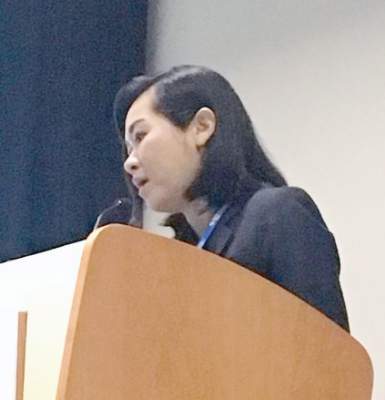AT IDWEEK 2017
SAN DIEGO (FRONTLINE MEDICAL NEWS)– Only 0.2% of intensive care unit patients developed MRSA infections after testing negative on nasal surveillance swabs, said Darunee Chotiprasitsakul, MD, of Johns Hopkins Medicine in Baltimore.
But physicians often prescribed vancomycin anyway, accumulating nearly 7,400 potentially avoidable treatment days over a 19-month period, she said during an oral presentation at an annual meeting on infectious diseases.
Current guidelines recommend empiric vancomycin to cover MRSA infection when ill patients have a history of MRSA colonization or recent hospitalization or exposure to antibiotics. Patients whose nasal screening swabs are negative for MRSA have been shown to be at low risk of subsequent infection, but guidelines don’t address how to use swab results to guide decisions about empiric vancomycin, Dr. Chotiprasitsakul said.
Therefore, she and her associates studied 11,882 adults without historical MRSA infection or colonization who received nasal swabs for routine surveillance in adult ICUs at Johns Hopkins. A total of 441 patients (4%) had positive swabs, while 96% tested negative.
Among patients with negative swabs, only 25 (0.22%) developed MRSA infection requiring treatment. Thus, the negative predictive value of a nasal swab for MRSA was 99%, making the probability of infection despite a negative swab “exceedingly low,” Dr. Chotiprasitsakul said.
But clinicians seemed not to use negative swab results to curtail vancomycin therapy, she found. Rates of empiric vancomycin use were 36% among patients with positive swabs and 39% among those with negative swabs. Over 19 months, ICU patients received 7,371 avoidable days of vancomycin, a median of 3 days per patient.
Matching patients by ICU and days at risk identified no significant predictors of MRSA infection, Dr. Chotiprasitsakul said. Johns Hopkins Medicine has robust infection control practices, high compliance with hand hygiene and contact precautions, and low rates of nosocomial MRSA transmission, she noted. The predictive value of a negative MRSA nasal swab could be lower at institutions where that isn’t the case, she said.
Johns Hopkins is working to curtail unnecessary use of vancomycin, said senior author Sara Cosgrove, MD, professor of medicine in infectious diseases and director of the department of antimicrobial stewardship. The team has added the findings to its guidelines for antibiotic use, which are available in an app for Johns Hopkins providers, she said in an interview.
The stewardship also highlights the data when discussing starting and stopping vancomycin in patients at very low risk for MRSA infections, she said. “In general, providers have responded favorably to acting upon this new information,” Dr. Cosgrove noted.
Johns Hopkins continues to track median days of vancomycin use per patient and per 1,000 days in its units. “[We] will assess if there is an impact on vancomycin use over the coming year,” said Dr. Cosgrove.
The investigators had no conflicts of interest. The event marked the combined annual meetings of the Infectious Diseases Society of America, the Society for Healthcare Epidemiology of America, the HIV Medicine Association, and the Pediatric Infectious Diseases Society.





